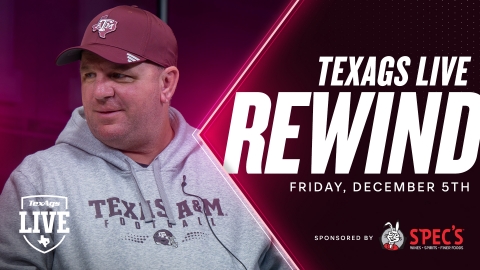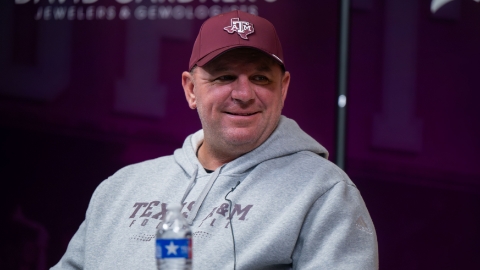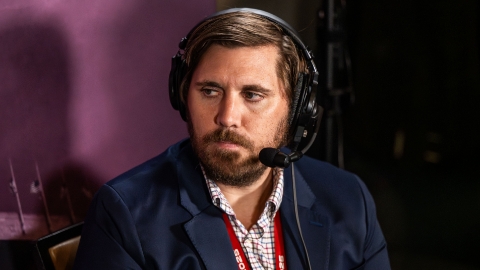Luxury suites not sweets…
July 1 marks the beginning of a new era in college sports as revenue sharing takes effect. College athletics attorney Mit Winter joined Tuesday's edition of TexAgs Live to discuss the changes enacted and how student-athletes will be impacted.
Key notes from Mit Winter interview
- What's changing is really who's paying the athletes and how the payment process is happening. Past NIL compensation has been a lot for college athletes since July 1, 2021. A vast amount has come from boosters and NIL investors. It's shifting from the boosters to paying the money to athletes, from schools directly paying the athletes. In a lot of cases, the money from schools will still be coming from investors, who will give the money to the schools. It won't always be athletic revenue, but it will come from any source of revenue the school’s athletic program has. Ticket sales, donations, the university side, tuition and what your state allows. Now, the athletes are directly contacted by the schools, and the agreements generally say that athletes are provided with a license to use their NIL in various ways and provide specific services for the schools.
- The school's deals don't have to go through any clearinghouses. They submit to the new College Sports Commission but are made to make sure the school is within the salary cap. Third-party NIL deals, any deals an athlete does behind the school, there's no limit to what they can do. The only deal is that it has to be submitted to the new commission. If it's a regular brand deal with a local business, that deal will sail through NIL. When it gets more complicated, is when a NIL deal is associated with an entity or individual with a booster or collective, then there is a stricter review of the agreement. It has to be for a “validity with business purposes,” which means a deal to promote the for-profit sale of goods and services and has to be in the range of compensation. There's no limit to the specific amount of how much third-party deals an athlete can have.
- A business owned by boosters will fall into an associated entity. There are five different settlement factors. Generally, if you're a business owned by a booster and donated $50,000 or more, your business will fall into an associated entity and won't do $4 million deals and will get flagged. Here's the big question: Who's to tell the business that doing a deal with an athlete is not worth $4 million? NIL will have to determine, and Deloitte and the commission, whether to flag the deal and tell the athlete if they can or can't do the deal. There will be lots of scenarios with the third-party stuff now.
- The plaintiff attorneys in the House settlement have the right to audit the school’s finances. They asked to see more schools that referred to revenue data from luxury sweets, and once they turned to operating revenue based on review form data of schools. So, depending on what they see, there might be nothing. If schools under-reported the revenue, the salary cap on what they can pay athletes should actually be higher than $25 million. If that's the case, it probably won't change this year. But soon, because for years two to three of the settlement, the school’s pay goes up four percent, but with a higher baseline.
- I'm sure people have been thinking about loopholes, so we'll have to see how effective the college commission is. Athletic directors have been saying they give the commission lots of power. They want them to investigate quickly and punish people if they have been cheating and breaking rules. They don't have subpoena power to investigate people and provide information. It's been an NCAA problem and hard to detect when athletes are getting paid under the table. They have hired two people from the MLB, both are attorneys in investigative work. They know what they are doing, but do they have the tools to work effectively?
- Kentucky, under its state law, can create a non-profit LLC. They created Champions Blue LLC and put the athletic departments to operate as a business and as part of the university. It frees them up to do things more quickly, and they can do things more efficiently. They have a governing board of people in athletics and entertainment. A little different from traditional boards, but we will see more of that. The new entity will form more contracts with athletes as well.
- It's a definite possibility, unless there's a federal law that says college athletes can't be employees, which will probably happen. The Johnson v. NCAA case and new fuel, schools are now directly contacting and paying athletes, which makes it stronger. The NCAA and conference commissioners are in view for them not to be employees. There are athletic directors who are on the other side who do not want them to be. Ross Dellenger wrote yesterday, Tennessee's AD told him how some are employees and some collect bargaining for work. There's definitely a split view on college athletics. In the past, it was 99 percent not to be an employee. It's now 75-25, but people realize that to bring stability in college athletics, we need to make certain college athletes employees. A lot is at the federal level.
- There will probably be a lot of Title IX litigation. There are two appeals to House settlements filed with the Ninth Circuit Court of Appeals based on Title IX, arguing the back damages. The $280 billion does not comply with Title IX. Ninety percent goes to male athletes. Looking forward, there are lots of Title IX questions about how schools are paying their revenue-sharing dollars. It's a grey area now. You get lots of answers on how it applies. Some say to pay off scholarship dollars, and because of the 50-50, you should pay out there. Others say it doesn't cover Title IX. Football generates the most revenue, and most schools are like that. The final answer will come from the courts.
Never miss the latest news from TexAgs!
Join our free email list




